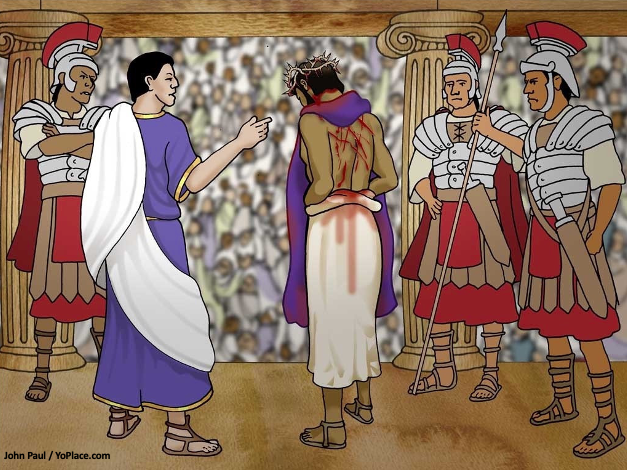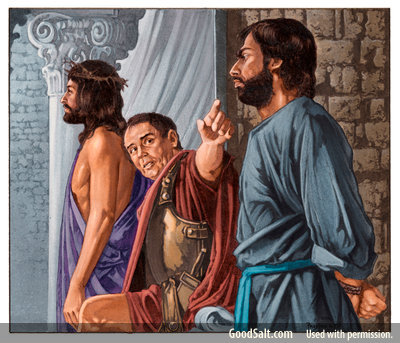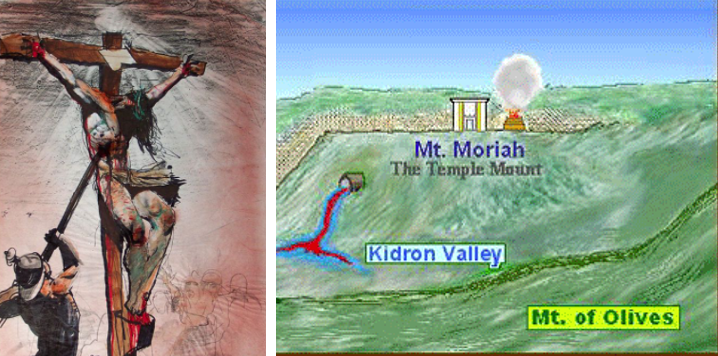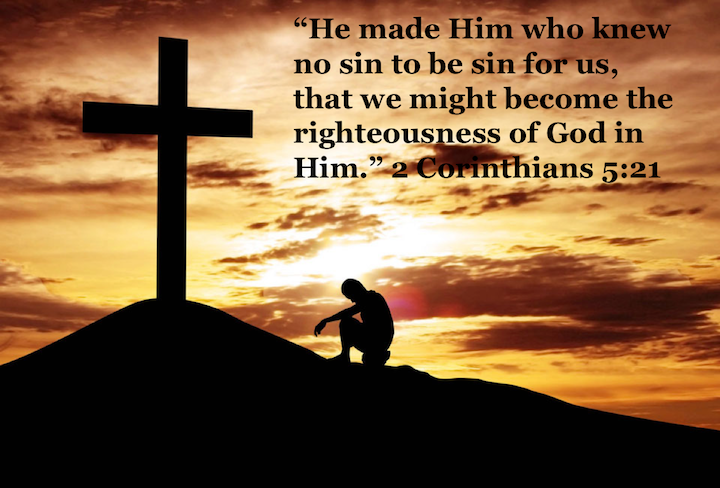“She bore a male Child who was to rule all nations with a rod of iron. And her Child was caught up to God and His throne.” Revelation 12:5
As the apostle John continued to survey the seventieth week of years (Daniel 9:27) a second time (cf. Revelation 10:11) in the book of Revelation, he focused on specific characters who will appear on stage as the drama unfolds. Beginning in Revelation 12, the apostle will describe the conflict between God and Satan in the spiritual realm that has taken place throughout history since Satan’s rebellion against God (Isaiah 14:12-15; Ezekiel 28:11-18) so we can understand how it will be manifested in the physical realm during the second half of the Tribulation period, especially during the bowl judgments (Revelation 16). 1
Last time John introduced two characters involved in the conflict: a woman and a Child (12:1-2). We learned that the woman represents the nation of Israel (12:1; cf. Genesis 37:9-11) and the Child represents the Lord Jesus Christ (12:2). Today, we will look at the third character in this spiritual battle.
“And another sign appeared in heaven: behold, a great, fiery red dragon having seven heads and ten horns, and seven diadems on his heads.” (Revelation 12:3). This second “sign” is described as a “fiery red dragon.” God identifies this dragon as “that serpent of old, called the Devil and Satan.” (Revelation 12:9; cf. 20:2). The color “red” might indicate the bloodshed Satan causes during this last half of the Tribulation period. 2
“Why is the dragon used as a symbol of Satan? Pharaoh, king of Egypt, in his cruelty to God’s people, and in proud and haughty independence of God, is termed ‘the great dragon’ (Ezekiel 29:3, 4). Nebuchadnezzar is similarly spoken of in respect to his violence and cruelty (Jeremiah 51:34). Gathering up the numerous scripture references in the Book of Psalms, and in the first three of the greater prophets, to the crocodile, the sovereign of the seas, who is identified with the dragon, insatiable cruelty seems the main feature. The Egyptians regarded the crocodile or dragon, according to their hieroglyphics, as the source and author of all evil, worshipped under the name of Typho. The color of the dragon, red, denotes his murderous, bloodthirsty character. This is the first time in Scripture that Satan is directly spoken of as a dragon. The heathen monarchs, Pharaoh and Nebuchadnezzar, enslaved and oppressed the people of God, and, thus far acting in satanic power, merited the appellation of dragon. But at the time treated of in our chapter, Satan is the prince of the world—its virtual ruler. The Roman power is the instrument through which he acts. Hence the title ‘great red dragon’ can now for the first time be used of him.” 3
Satan is described as “having seven heads and ten horns” (12:3b), which are the same as the Beast (Antichrist) possesses during the last half of the Tribulation period (Revelation 13:1; 17:3, 7). Revelation 13:2b clearly tells us that this individual derives his authority from Satan: “The dragon gave him his power, his throne, and great authority.” This demonstrates that Satan is seeking a governmental authority over the woman’s “offspring” (Revelation 12:17), the nation of Israel, which authority rightly belongs to Christ Himself (Revelation 12:5; cf. Psalm 2:6-9; Matthew 2:2; 27:11, 37). 4
The “seven heads” and “ten horns” probably represent seven nations and ten rulers (12:3b; cf. Revelation 17:12) and the “seven diadems” represent political authority in the Tribulation period (12:3b; cf. Revelation 17:10-12). 5 Ten kings will rule under Satan’s authority in the Tribulation period (12:3b; cf. Daniel 7:7, 23-24; Revelation 13:1; 17:7, 12), but when the Beast (Antichrist) rises to preeminence among them, he will subdue threeof them, leaving only seven (Daniel 7:7-8, 20, 23-24; Revelation 13:1). 6
“His tail drew a third of the stars of heaven and threw them to the earth. And the dragon stood before the woman who was ready to give birth, to devour her Child as soon as it was born.” (Revelation 12:4). God was coming down to Satan’s turf on earth! And the old dragon was not about to let that happen without a fight! John informs us that Satan’s “tail drew a third of the stars of heaven” or fallen angels who followed Satan’s rebellion against God “and threw them to the earth” to try to prevent the birth of Jesus the Messiah (12:4a). When Jesus is born into the world, Satan is there, with his cohorts, waiting to destroy Christ. While shepherds are watching and angels are singing, Satan is waiting to make his move.
The attempt to kill the Christ Child John sees in this vision is probably a reference to king Herod’s attempt to kill Jesus. Herod was the Roman government’s puppet king over the nation of Israel. The book of Matthew tells us that when Herod learned that Jesus had been born, he had all boys two years old and younger be murdered (Matthew 2:1-16). Herod was afraid, because he knew that he wasn’t the rightful king and that Jesus was, so he did what political leaders do when threatened, and he tried to exterminate the competition. John pictures Herod’s brutal attempt to kill Jesus as a Satanic attempt to stop Jesus in fulfilling His mission.
So, when we celebrate the birth of Christ, I believe the Lord would tell us that we ought never forget the great conflict that was being waged in the heavenlies to get the Savior to earth. Think about how vulnerable Christ made Himself! Here He was, the Creator of the world, lying helpless and hungry in the arms of a woman that He created! The Savior who came to bring peace and restore God’s creation was the object of the greatest hatred ever known to God’s creation. And He found Himself in the middle of the greatest conflict to be waged yet on this earth.
“She bore a male Child who was to rule all nations with a rod of iron. And her Child was caught up to God and His throne.” (Revelation 12:5). In this version of the Christmas story, Jesus goes from being born at Bethlehem (“She bore a male Child”) to ascending to heaven where He would sit on “His throne.” Satan failed to destroy Jesus at His birth, and because he also failed to destroy Him during His life and in His death, Jesus Christ ascended victoriously into heaven 7 where He would sit on His throne until His enemies will be made the footstool of His feet (cf. Hebrews 1:10). The Messiah’s kingdom will come in spite of any and all attempts of the dragon to prevent it. 8 Christ will “rule all nations with a rod of iron” in His Millennial Kingdom on earth after He returns from heaven to earth with His church (Revelation 19:11-20:6; cf. Psalm 2:8-9). John uses this one verse to summarize the birth, life, death, resurrection, ascension, and future reign of the Lord Jesus Christ.
Satan not only used Herod in an attempt to kill the baby Jesus, but He would later use Judas to betray Him (John 13:27) andPilate to condemn Him (Mark 15:15) andthe Romans to crucify Him. All the fury of hell would be released against the child born on that silent night.
As Jesus lay in the manger, somewhere in Palestine there grew a tree, straight and strong. One day that tree would be cut down and fashioned into a cross. And it would become the ultimate Christmas tree upon which was hung the ultimate gift! On that cross the perfect Son of God would take our punishment for our sin and defeat the devil once and for all. This was predicted in the first book of the Bible.
When the first man and woman disobeyed God, the Lord pronounced a curse on the serpent, the woman, and the man (Genesis 3:14-19). Regarding the serpent, God said: “And I will put enmity between you and the woman, and between your seed and her Seed; He shall bruise your head, and you shall bruise His heel.” (Genesis 3:15). God said there would be a perpetual struggle between Satanic forces and humankind. It would be between Satan and the woman, and their respective offspring or “seeds.” The “offspring” of the woman was Cain, then all humanity at large, and then Christ and those collectively in Him. The “offspring” of the serpent includes demons and anyone serving his kingdom of darkness, those whose “father” is the devil (John 8:44). God’s pronouncement was ultimately fulfilled when Satan would bruise Jesus’ heel (“he shall bruise His heel”) through Christ’s sufferings and death, but Christ, would deliver the fatal blow to Satan when He defeated the Devil through His death and resurrection (“He shall bruise your head”).
How? Christ ”14 wiped out the handwriting of requirements that was against us, which was contrary to us. And He has taken it out of the way, having nailed it to the cross. 15 Having disarmed principalities and powers, He made a public spectacle of them, triumphing over them in it.” (Colossians 2:14-15). Through His death on the cross, Christ “wiped out” or erased the certificate of debt, with its obligations, that was against us (2:14). When a person was executed under Roman law, the sentence was attached to the accused’s cross (cf. John 19:19). All our sins were attached to Jesus’ cross. Jesus took all of Satan’s accusations against us away, effectively nailing our certificates of debt to His cross. He paid our sin debt to God in full; He died for our guilt and shame. God “made Him who knew no sin to be sin for us, that we might become the righteousness of God in Him.” (2 Corinthians 5:21).
In doing so, Christ also disarmed “principalities and powers” – Satan and his forces – disgraced them and triumphed over them (Colossians 2:15). A fallen angel is no match for the Son of God, who took away Satan’s rulership. Satan’s accusations against us are empty because Christ paid the penalty for all our sins.
“If somebody has a gun pointed at you, whether or not it’s loaded is a huge deal. The devil doesn’t want you to know that his gun has been emptied by the cross of Christ. Now, if you don’t know that, you’re still going to cower and run, living in fear and shame. But you don’t have to listen to him. Though he is right about your sin, your debt has been paid by Christ. You are free to live for God. Satan still has power, but he no longer possesses final authority in history.” 9
The Bible tells us in Hebrews 2:14-15: “14 Inasmuch then as the children have partaken of flesh and blood, He Himself likewise shared in the same, that through death He might destroy him who had the power of death, that is, the devil, 15 and release those who through fear of death were all their lifetime subject to bondage.” Jesus Christ became a man without ceasing to be God, to render the devil powerless over us. Through His death, Jesus conquered death to free people from the fear of death (2:14-15). If the Son has set you free, then, the only power the devil has over you is what you permit him.Satan is “the father of lies” (John 8:44), so he’ll try to trick you into giving him permission to exercise authority over you. But the devil no longer has the power of death.Hence, the fear of death should no longer make you a slave (see 1 Corinthians 15:51-57). 10
This cosmic war between God and Satan is won through the death and resurrection of Jesus Christ. John wants us to see the manger through the lens of the cross in Revelation 12:1-5! He wants us to understand that Jesus’ victory began on the day He was born.
When John wrote, “And her Child was caught up to God and His throne” (Revelation 12:5b), he used the Greek word haparzō (“caught up”)for the ascension of Christ from earth to heaven after His death and resurrection (cf. Acts 1:9-11). This word means to “snatch, seize, or take suddenly.” 11 This is the same word that the apostle Paul uses to describe the Rapture or sudden removal of the church from the earth prior to the Tribulation. “Then we who are alive and remain shall be caught up (haparzō) together with them in the clouds to meet the Lord in the air. And thus, we shall always be with the Lord.” (I Thessalonians 4:17).
It is interesting to observe in Revelation 12:6 that John then fast forwards in time from Christ’s ascension to Satan’s hostile attacks against the woman representing the nation of Israel during the Tribulation period. John skips over the entire history of the church here. Why?
“For one thing, the emphasis in the book of Revelation is not on what happens to the church during the present age but on what will happen to Israel and Gentile believers during the future Tribulation. Second, ever since Pentecost the church has been spiritually united with Christ through the baptism of the Holy Spirit (1 Corinthians 12:12-13), so we share with Christ in His destiny. Just as the male child was caught up to God and rescued from Satan’s earthly wrath, the church also will be caught up to God to be rescued from the coming wrath of the Tribulation (1 Thessalonians 4:17; 5:9-10).” 12
Christ’s resurrection and ascension guarantees our own resurrection and ascension to heaven through the Rapture of the church (I Thessalonians 4:14-17). Instead of facing the wrath of the Tribulation period on earth, the church will be caught up to be with the Lord Jesus in heaven (Revelation 4:1-4; cf. I Thessalonians 1:10; 4:13-5:11). What a glorious future awaits those who believe in Christ during this Church Age. Satan hated Jesus and He hates Christ’s church. But Jesus loves us infinitely and has provided an incredible future for us with Him in heaven (John 14:2-3). May all the glory go to Him!!!
Prayer: Precious Lord, thank You for Your Word which gives us heaven’s perspective about earthly events. Since his rebellion, Satan has aggressively opposed You and Your people. The Devil failed to destroy Jesus at His birth, and because he also failed to destroy Him during His life and in His death, the Lord Jesus ascended victoriously into heaven. Because of Christ’s death and resurrection, we who have believed in Jesus will also be resurrected and caught up to heaven in victory to be with Christ forever when He returns at any moment for His church. We praise You, Lord, for the plans You have for us, to prosper us and not to harm us. Plans involving a future that is filled with hope. Satan on the other hand, is a liar and a murderer who seeks to devour us. Please use Your Holy Spirit to expose his strategies, we pray, and open the eyes of those who have been blinded by his deceit. We ask that many more people on earth will hear and believe the gospel of grace before Jesus returns for His church, so Christ is most glorified. In the mighty name of Jesus. Amen.
ENDNOTES:
1. Tom Constable, Notes on Revelation, 2017 Edition, pp. 132-133 cites Robert L. Thomas, Revelation 8—22: An Exegetical Commentary (Chicago: Moody Press, 1995), pg. 117.
2. John F. Walvoord, The Bible Knowledge Commentary Epistles and Prophecy, Editors John F. Walvoord and Roy B. Zuck, (David C Cook, 2018 Kindle Edition), locations 5673 5679.
3. J. Dwight Pentecost, Things to Come (Zondervan Academic, 2010 Kindle Edition), pg. 287 cites Walter Scott, Exposition of the Revelation of Jesus Christ (London: Pickering and Inglis, [n.d.]), pp. 249-250.
4. Pentecost, pg. 287.
5. Constable, pg. 134.
6. Ibid.
7. Ibid., pg. 135.
8. Bob Vacendak; Robert Wilkin; J. Bond; Gary Derickson; Brad Doskocil; Zane Hodges; Dwight Hunt; Shawn Leach. The Grace New Testament Commentary: Revised Edition (Grace Evangelical Society, Kindle Edition, 2019), pg. 1542.
9. Tony Evans, CSB Bibles by Holman, The Tony Evans Bible Commentary (B & H Publishing Group, Kindle Edition, 2019), pg. 2148.
10. Ibid., pg. 2243-2244.
11. Walter Bauer, A Greek-English Lexicon of the New Testament and Other Early Christian Literature: Third Edition (BDAG) revised and edited by Frederick William Danker (Chicago: University of Chicago Press, 2000 Kindle Edition), pg. 134.
12. Charles R. Swindoll, Insights on Revelation, (Swindoll’s Living Insights New Testament Commentary Book 15, Tyndale House Publishers, Inc., 2014 Kindle Edition), pp. 235-236.






